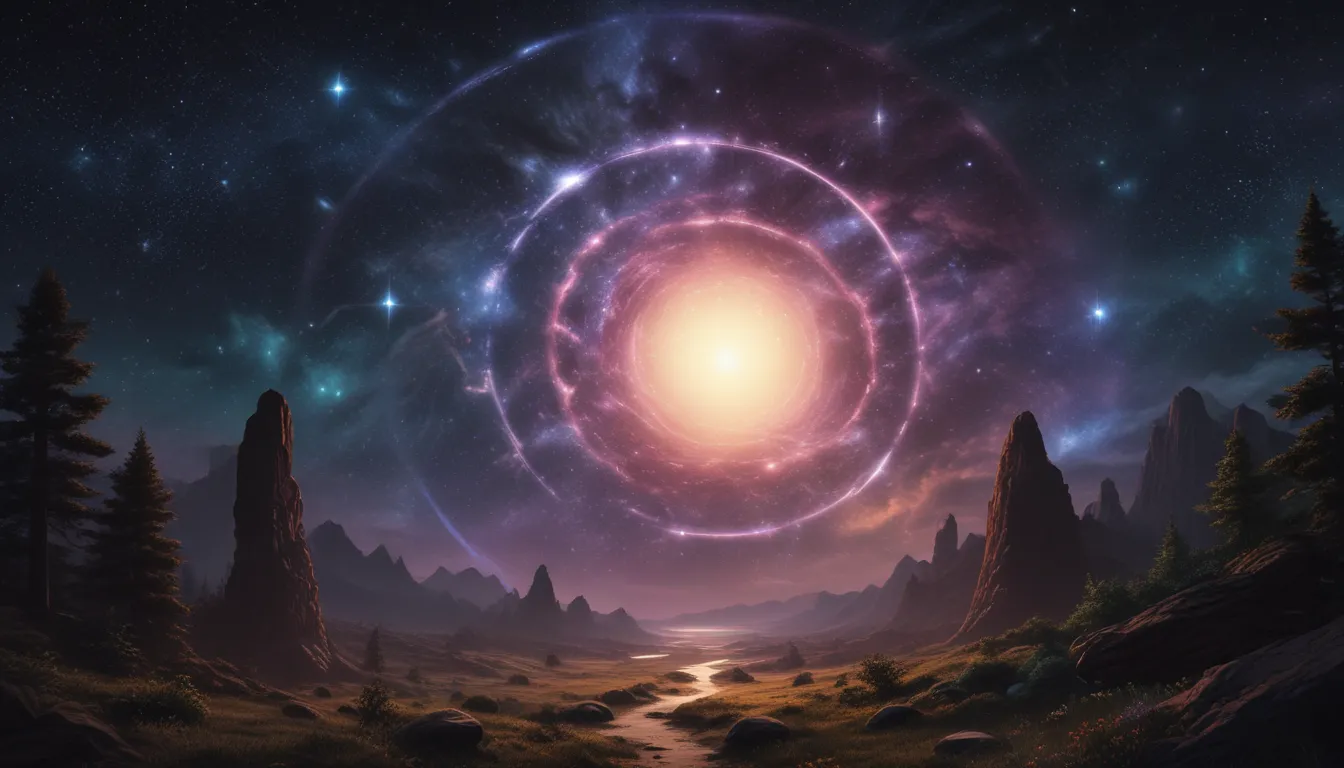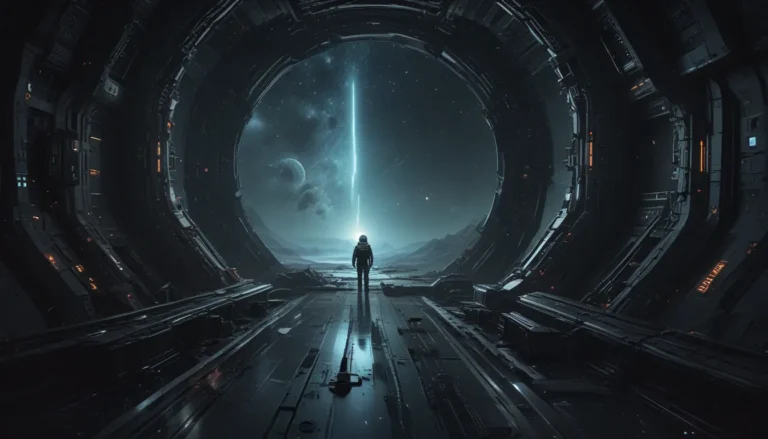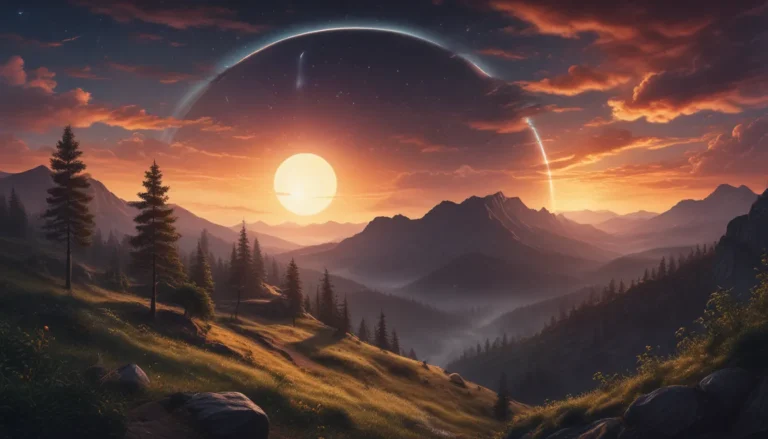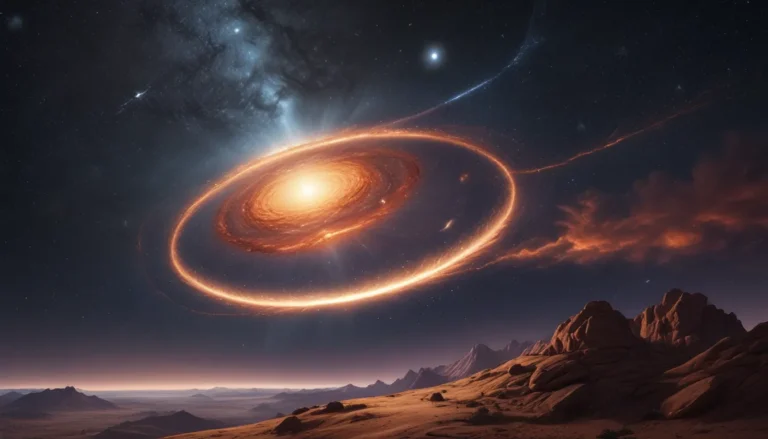The pictures we use in our articles might not show exactly what the words say. We choose these pictures to make you interested in reading more. The pictures work together with the words but don’t take their place. The words still tell you the important facts.
The universe is a vast and fascinating place, filled with countless wonders that continue to intrigue and inspire us. One such marvel is the Galactic Halo, a mysterious component that extends far beyond the boundaries of our galaxy, offering a treasure trove of discoveries waiting to be unveiled. Comprising ancient stars, globular clusters, and dark matter, the Galactic Halo has captivated the minds of astronomers and astrophysicists alike.
In this article, we will embark on a cosmic journey to explore 13 intriguing facts about the Galactic Halo. From its extensive structure to the presence of old stars and the mysterious dark matter that dominates it, we will delve into the composition, origins, and significance of the Galactic Halo in the study of our universe. Join us as we unravel the secrets of this enigmatic celestial structure and gain a deeper understanding of its role in shaping the cosmos.
Discovering the Galactic Halo
The Galactic Halo is a vast and captivating structure that surrounds our Milky Way galaxy, stretching thousands of light-years across space. Comprised of a myriad of stars, globular clusters, and dark matter, the Galactic Halo serves as a cosmic time capsule, preserving evidence of ancient cosmic events and providing valuable insights into the history and evolution of our galaxy.
Unveiling Ancient Stars
One of the most remarkable features of the Galactic Halo is the abundance of old stars it contains. Known as halo stars, these celestial bodies are among the oldest in the universe, dating back to the early stages of galaxy formation. By studying these ancient stars, astronomers can unravel the early history of our galaxy and gain insights into its formation and evolution.
The Phenomenon of Galactic Cannibalism
The Galactic Halo is the result of a fascinating process known as galactic cannibalism. Over billions of years, the Milky Way has gravitationally captured and assimilated smaller satellite galaxies, incorporating their stars into the halo. This process of galactic mergers and interactions has contributed to the rich diversity of the halo and shaped its unique characteristics.
Dark Matter: The Invisible Force
Dark matter plays a predominant role in shaping the Galactic Halo, making up a significant portion of its mass. This elusive substance, which does not interact with light, exerts a gravitational pull that holds the halo together and influences the motion and distribution of visible matter within the galaxy. The presence of dark matter in the Galactic Halo remains a compelling mystery that continues to intrigue scientists.
Astonishing Galactic Bubbles
Astronomers have discovered colossal bubbles of gas within the Galactic Halo, known as Fermi bubbles, extending above and below the galactic plane. These structures are believed to have been formed by a powerful outburst of energy originating from the galaxy's central region, leaving behind a dramatic imprint on the halo's landscape.
Tracing Stellar Streams
Stellar streams, long ribbons of stars, are a captivating feature of the Galactic Halo. These streams are remnants of disrupted dwarf galaxies or star clusters that have been pulled apart by the Milky Way's tidal forces, creating intricate patterns that trace the halo's gravitational terrain.
Unveiling the Oldest Star
Within the Galactic Halo lies the oldest known star in our galaxy, SMSS J031300.36-670839.3, estimated to be approximately 13.6 billion years old. This ancient star offers a glimpse into the early stages of cosmic evolution, highlighting the halo's role as a repository of ancient celestial relics.
Bridging the Magellanic Clouds
The Galactic Halo serves as a vital bridge connecting the Milky Way to its companion galaxies, the Large and Small Magellanic Clouds. These interactions have played a significant role in shaping the morphology and dynamics of the halo, leaving behind traces of their celestial encounters.
Satellite Dwarf Galaxies
Surrounding the Galactic Halo are numerous dwarf galaxies, small and faint satellite galaxies that orbit the Milky Way. These dwarf galaxies, such as the Sagittarius Dwarf and the Sculptor Dwarf, contribute to the overall structure and dynamics of the halo through their gravitational interactions, adding to its cosmic tapestry.
The Enigma of Hypervelocity Stars
Hypervelocity stars, stars moving at incredibly high velocities, are believed to originate from within the Galactic Halo. These stars are thought to have been ejected from the Milky Way's center due to interactions with the supermassive black hole residing there, propelling them into intergalactic space at astonishing speeds.
Unveiling Halo Planets
Recent discoveries have revealed the presence of planets within the Galactic Halo, orbiting halo stars. These planetary objects offer intriguing targets for future exoplanet research, providing unique insights into planetary formation and evolution beyond the confines of the galactic disk.
Cosmic Archaeology in the Galactic Halo
Studying the Galactic Halo is akin to engaging in cosmic archaeology, as it offers astronomers invaluable clues about the early stages of galaxy formation. By analyzing the chemical compositions of halo stars, researchers can reconstruct the chemical evolution of the Milky Way and gain a deeper understanding of its cosmic history.
An Interstellar Time Capsule
The Galactic Halo acts as an interstellar time capsule, preserving evidence of past cosmic events and interactions. Through the study of the halo's stellar populations, scientists can unlock the secrets of the galaxy's turbulent past and gain insights into the cosmic processes that have shaped our celestial neighborhood.
Delving Deeper into the Galactic Halo
In conclusion, the Galactic Halo emerges as a fascinating celestial structure that holds a wealth of untold stories about our galaxy and the wider universe. From its origins in galactic cannibalism to its role as a repository of ancient stars and dark matter, the Galactic Halo continues to captivate scientists and stargazers alike. By unraveling the mysteries of the Galactic Halo, we gain a deeper appreciation for the cosmic wonders that surround us and a better understanding of the intricate dance of galaxies in the vast expanse of space.
FAQs About Galactic Halos
-
What is the Galactic Halo? The Galactic Halo is a vast region surrounding the Milky Way galaxy, containing ancient stars, dark matter, and other cosmic debris.
-
How is the Galactic Halo formed? The exact formation process of the Galactic Halo is still not completely understood, but it is believed to originate from the assimilation of smaller galaxies and the scattering of stars due to galactic interactions.
-
What is the significance of the Galactic Halo? The Galactic Halo plays a crucial role in galaxy evolution, aiding in the formation of heavy elements and offering insights into the history and dynamics of our Milky Way.
-
Can we observe the Galactic Halo? Yes, the Galactic Halo can be observed through various astronomical techniques, providing valuable information about its structure and composition.
-
Is the Galactic Halo related to dark matter? Yes, the Galactic Halo is closely linked to dark matter, with dark matter playing a dominant role in shaping its structure and dynamics.
-
Are there ongoing research efforts focused on the Galactic Halo? Yes, scientists are actively studying the Galactic Halo to uncover its origins, composition, and role in galaxy evolution, utilizing a combination of observations, simulations, and theoretical models.
The Galactic Halo beckons us to explore its mysteries and unravel the secrets it holds about our cosmic past. As we continue to delve deeper into the enigmatic realms of the universe, each discovery brings us closer to understanding the grand tapestry of cosmic evolution. Join us on this cosmic journey of discovery as we uncover the captivating wonders of the Galactic Halo and expand our horizons in the infinite expanse of space.






